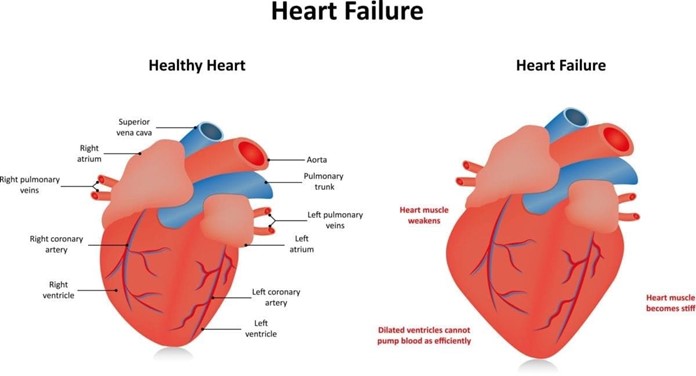A client with heart failure (HF) develops hyperaldosteronism and spironolactone is prescribed. Which instruction should the nurse include in this patient’s plan of care?
Replace salt with a salt substitute.
Limits intake of high-potassium foods.
Cover your skin before going outside.
Monitor skin for excessive bruising.
The Correct Answer is B
Spironolactone is a potassium-sparing diuretic that works by blocking the actions of aldosterone, a hormone that can lead to potassium loss in the urine. However, in some cases, spironolactone can cause hyperkalemia (high levels of potassium in the blood), which can be dangerous for patients with heart failure. Therefore, it is important to instruct the patient to limit their intake of high-potassium foods such as bananas, oranges, tomatoes, spinach, and salt substitutes containing potassium.
Option a (Replace salt with a salt substitute) is incorrect because salt substitutes often contain potassium, which can further increase the risk of hyperkalemia.
Option c (Cover your skin before going outside) is unrelated to the use of spironolactone and hyperkalemia.
Option d (Monitor skin for excessive bruising) is not directly related to the use of spironolactone and hyperkalemia, although it is a potential side effect of other medications used to treat heart failure.

Nursing Test Bank
Naxlex Comprehensive Predictor Exams
Related Questions
Correct Answer is C
Explanation
The correct answer is C. Instruct the client to request assistance when ambulating to the bathroom.
Choice A reason:
Advise the client that the medication should start to work in about 30 minutes.
While it is important to inform the client about the onset of action of the medication, this is not the highest priority. Codeine, an opioid, can cause dizziness and sedation, which increases the risk of falls. Therefore, safety measures take precedence over informing the client about the medication’s onset time.
Choice B reason:
Administer a stool softener/laxative at the same time as the analgesic.
Opioids like codeine can cause constipation, so administering a stool softener or laxative is a good practice. However, this action is not the highest priority when considering the immediate safety of the client. Ensuring the client’s safety from potential falls due to dizziness or sedation is more urgent.
Choice C reason:
Instruct the client to request assistance when ambulating to the bathroom.
This is the correct answer because codeine can cause dizziness, sedation, and orthostatic hypotension, increasing the risk of falls. Ensuring the client requests assistance when moving can prevent potential injuries, making it the highest priority nursing action.
Choice D reason:
Tell the client to notify the nurse if the pain is not relieved.
While it is important for the client to communicate about the effectiveness of pain relief, this is not the highest priority. The immediate concern is the client’s safety due to the sedative effects of codeine. Therefore, preventing falls and injuries takes precedence.
Correct Answer is B
Explanation
Nitrofurantoin is an antibiotic commonly used to treat urinary tract infections. One of the adverse effects of nitrofurantoin is diarrhea, which may be severe and watery. Therefore, it is important for the home care nurse to inform the client that the diarrhea may be a side effect of the medication and requires further evaluation. The nurse should instruct the client to stop taking the medication and contact their healthcare provider for further assessment and treatment. The nurse should also assess the client's fluid and electrolyte status and monitor for signs of dehydration.
Option a is important to consider, but it does not address the potential adverse effect of the medication.
Option c may be appropriate in some cases, but it is not the priority intervention at this time.
Option d is not necessarily true and may cause unnecessary alarm to the client.

Whether you are a student looking to ace your exams or a practicing nurse seeking to enhance your expertise , our nursing education contents will empower you with the confidence and competence to make a difference in the lives of patients and become a respected leader in the healthcare field.
Visit Naxlex, invest in your future and unlock endless possibilities with our unparalleled nursing education contents today
Report Wrong Answer on the Current Question
Do you disagree with the answer? If yes, what is your expected answer? Explain.
Kindly be descriptive with the issue you are facing.
